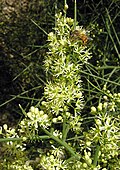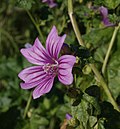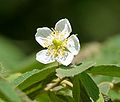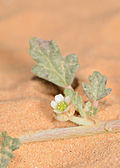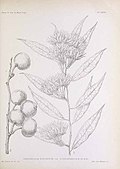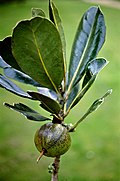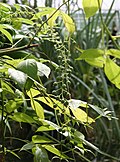
| Flowering plant families (APG IV) | |||||
|---|---|---|---|---|---|
| Early-diverging flowering plants | |||||
| Monocots: Alismatids • Commelinids • Lilioids | |||||
Eudicots
|
The malvids consist of eight orders of flowering plants: Brassicales, Crossosomatales, Geraniales, Huerteales, Malvales, Myrtales, Picramniales and Sapindales. [a] This subgroup of the rosids is divided into 59 families of trees, shrubs, vines and herbaceous plants. [4] [5]
Contents
The cabbage family includes broccoli, turnips, mustards, and radishes. [6] The ornamental geraniums, and their many hybrids and cultivars, come from five species of Pelargonium . [7] The mallow family includes the plants that yield cocoa beans, Cola nuts, okra, cotton and jute. [8] In the family Lythraceae, Pomegranates were cultivated by Bronze Age cultures, and wild water chestnuts were consumed in large quantities by prehistoric Europeans. [9] Eucalyptus trees are the tallest known flowering plants, up to 100 m (330 ft) or more; they are grown for timber and for their oils, used in candy, perfumes and cough medicine. [10] Mangos and cashews come from the same plant family as poison ivy, and can sometimes trigger allergic reactions. [11] Canada produces most of the world's maple syrup, and the maple leaf is the country's national symbol. [12] Citrus agriculture outranks other sweet-fruit industries in warm climates. [13]























